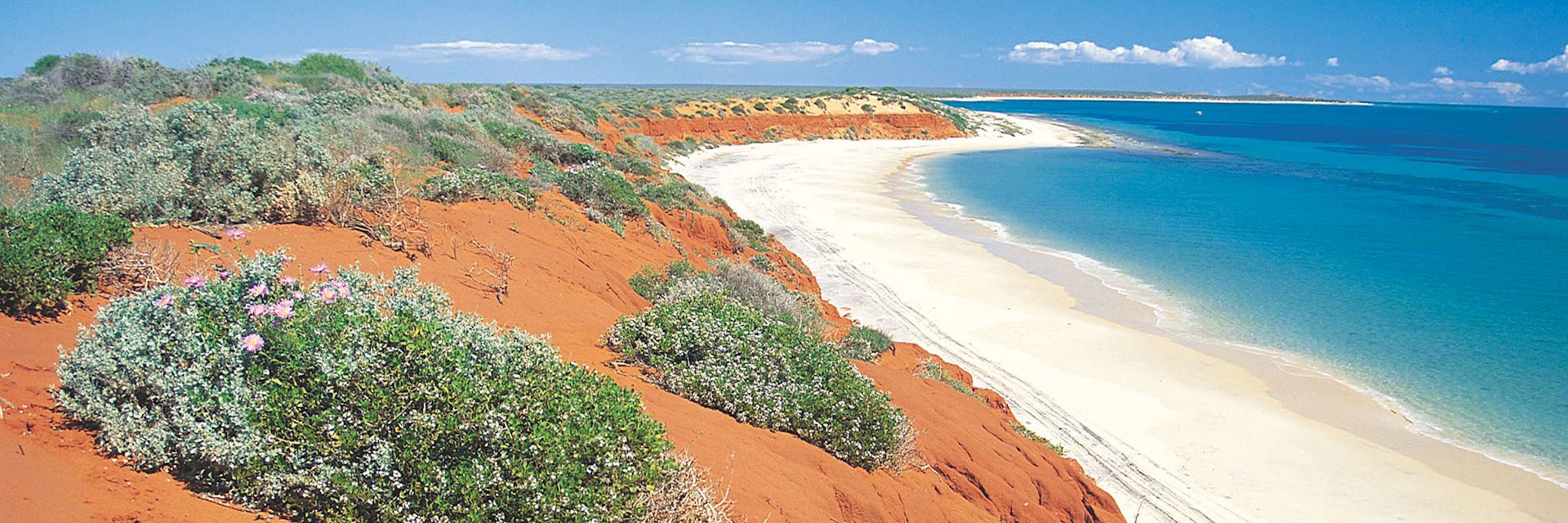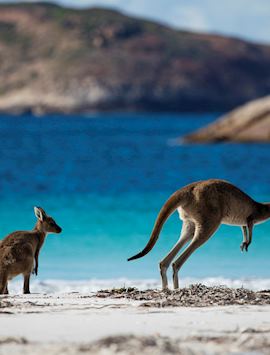Written by Lee
Australia & New Zealand Specialist
Western Australia has it all: national parks, Aboriginal culture and the closest fringing reef. Our specialist Lee shares her experience of the region's most extraordinary road trip.
The first thing you might notice are the colours. There’s the oxblood, vermilion, rust and ochre of the Outback; the pale olive green of the eucalypts; the pearlescent white of the beaches; and the neon-turquoise, spearmint, aquamarine of the Indian Ocean. Then there’s the sky: an unblemished cornflower blue. The almost-constant sun makes everything glow with a technicolour intensity. And, between July and October, the whole region is awash with a rainbow of wildflowers.
I first visited Western Australia 12 years ago. Last December, I returned for a research trip. I’m happy to say that the colours haven’t dimmed and nor has the residents’ hospitality: endlessly welcoming, proud of their homeland, unpretentious and kind.
But this isn’t the Australia you might have encountered elsewhere. Leaving behind the bright lights of Perth and heading up the Coral Coast, you’ll find a less manicured, more rustic backcountry. It’s a place where you can pull into a no-frills roadhouse (filling station) and pass the time of day with ranchers, truckers and farmers. The kind of place where your Aboriginal guide still participates in traditional ceremonies.
Towns are tiny, roads are long and there’s no well-oiled tourist conveyor belt.
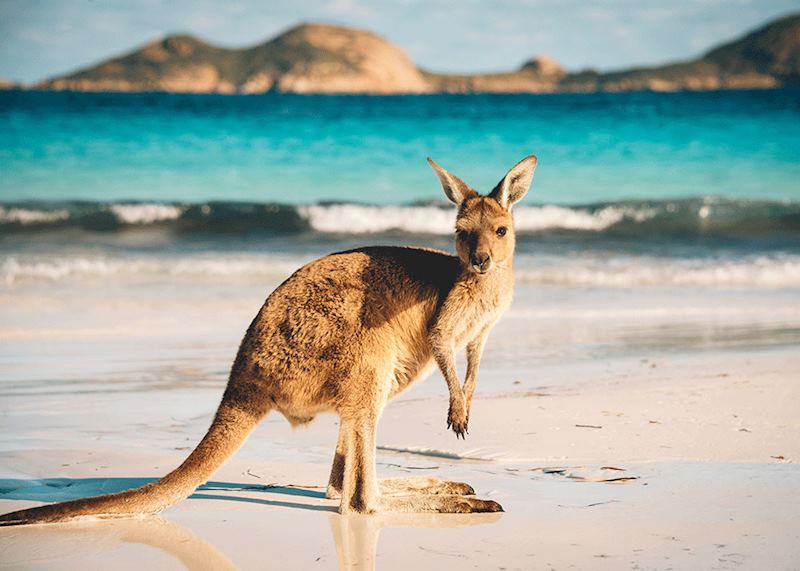
On the road
The best way to see Western Australia is by car. The classic route hugs the Coral Coast, taking you north from Perth, the state capital, to Exmouth, where you can catch a short flight back to your start point.
The whole route sees you cover 1,247 km (774 miles). On the way, stop to explore geologically striking national parks, tour with knowledgeable Aboriginal guides and snorkel the thriving Ningaloo Reef.
An added bonus: as of 1st April this year, car-hire company Avis are reducing their one-way drop-off fees, making this trip much better value for money.
You do need to be prepared for some long days in remote, Outback-esque terrain. Some drives last more than five hours, but you can break up the journey with some incredible sights, including Pinnacles Desert and Pink Lake.
Roads are uncrowded. The landscapes you pass through are full of surprises, such as deserts punctuated with termite mounds — from afar, they look like people striking wacky poses. And the roadhouses — where you can grab a coffee and a bite to eat — are a hoot. They always seem to come with some eccentric extra. I’ve counted a gang of resident emus, a random fibreglass sculpture and — most unexpectedly — some of the most delicious Vietnamese spring rolls I’ve ever tasted. All this, in the middle of desert.
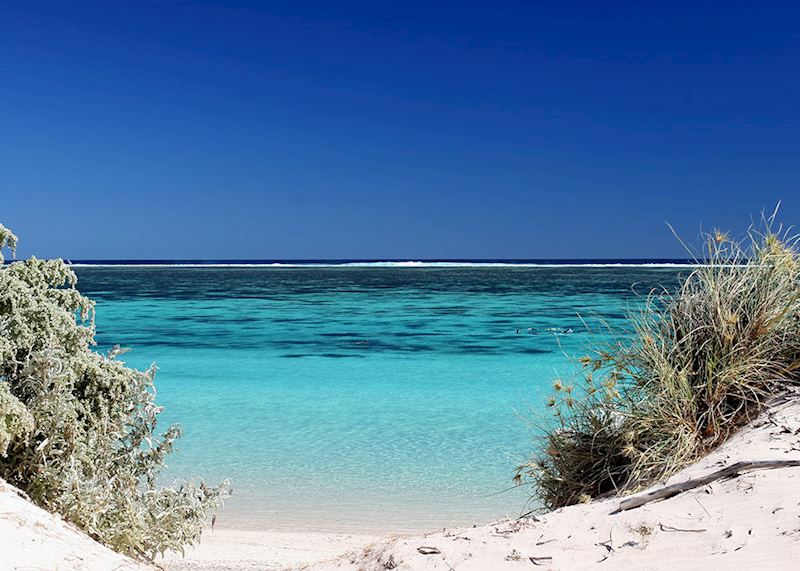
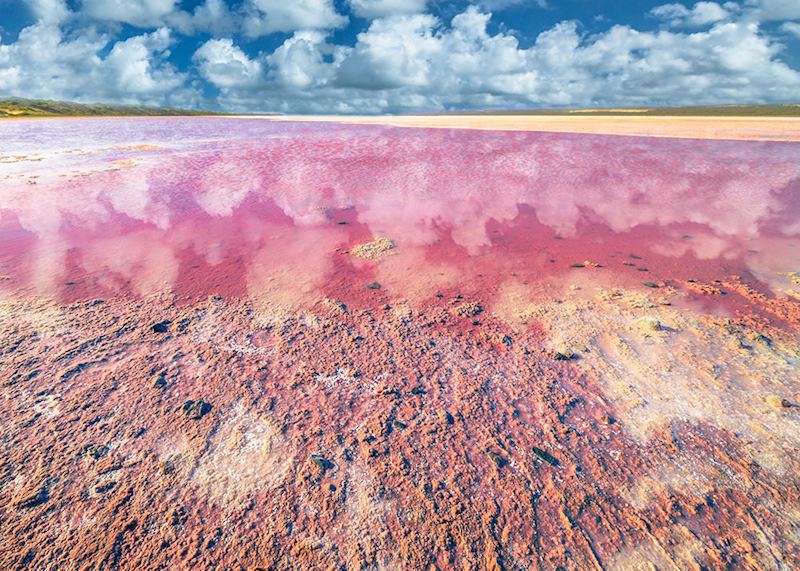
Polished Perth
Perth has long been the overlooked little brother to megawatt cities such as Sydney and Melbourne. Until now. Western Australia’s state capital has undergone major development in recent years, bestowing it with a smart, high-sheen feel and a spate of new eating, drinking and entertainment outlets. The gourmet wizardry of Wildflower, the restaurant at COMO The Treasury Hotel, stands out, but I’ve also had a lovely evening at a brewhouse on Elizabeth Quay, Perth’s newest development.
The Swan River winds through the city and you don’t need to go far to find open green spaces: Kings Park, with its array of native botany, sits right in the city centre. Sweeping beaches, some with dining spots overlooking the ocean (ideal for experiencing a crimson Indian Ocean sunset) are only a short drive or train ride away. They’re all the more tempting given that Perth is Australia’s sunniest state capital.
But what I like most about Perth is that, despite the changes it’s seen over the past decade, it retains a low-key, understated, small-town feel.
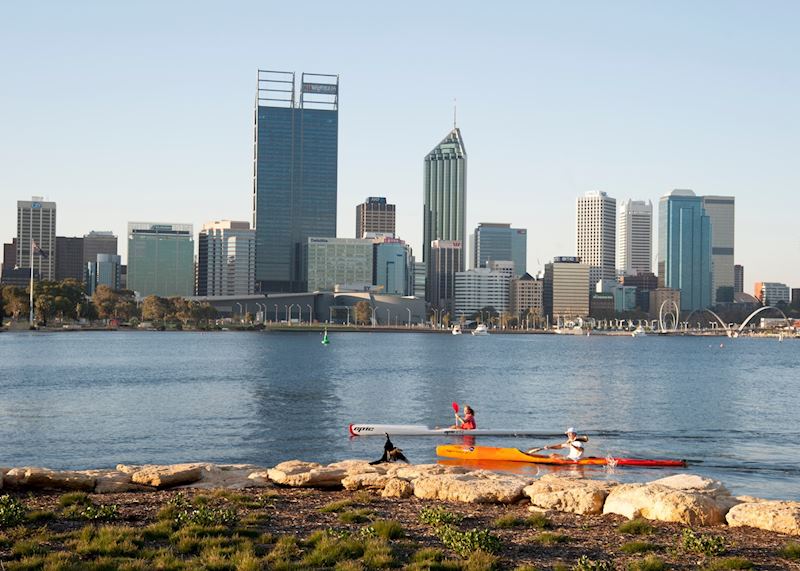
Pillars, pictures frames and pristine beaches
Driving north from Perth, the first national park you’ll hit is Nambung. Its showpiece is the Pinnacles, where million-year-old limestone pillars jut out of the silky sand. Nearby lies Lake Thetis, whose shoreline is scattered with miniature crater-like mounds — thrombolites, billion-year-old living fossils.
Further on, there’s the tawny-red Tumblagooda sandstone of Kalbarri National Park, which has been sculpted into various formations. You can visit them on a series of easy walking trails. My favourite is the loop trail that leads to the park’s most popular spot: ‘Nature’s Window’, a natural arch perfectly framing a view over a gorge.
Francois Peron National Park, four hours up the coast, is covered in orangey-scarlet sand — sacred to local Aboriginals. This was where I first became enraptured by Western Australia’s chromatic power: when I saw the sand juxtaposed with the cyan ocean.
Beyond Exmouth, you’ll come to Cape Range National Park. Here you can snorkel in Turquoise Bay, with its thriving turtle population, and bask on unspoiled white sands. The park also has several viewpoints where, in the Austral winter, you can spy humpback whales. And Yardie Creek, an immense gorge, lies a short drive away. The hiking is accessible and you’re likely to see plenty of kangaroos.
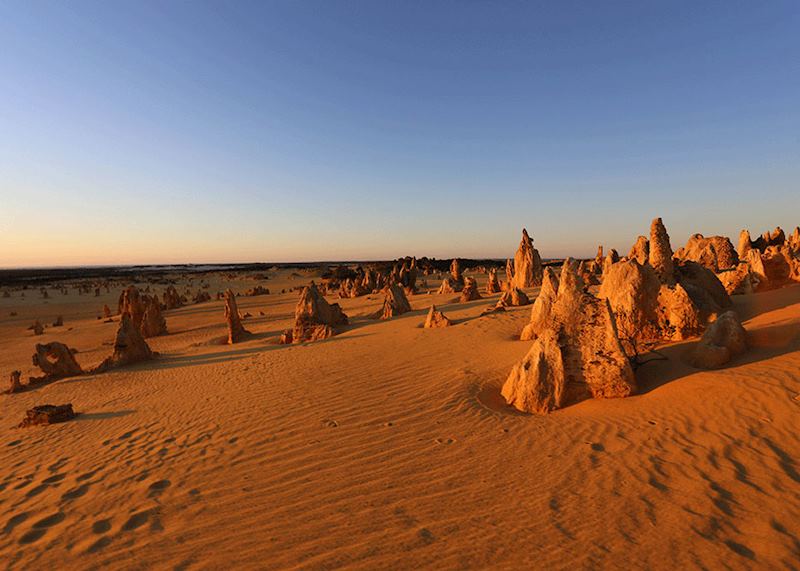
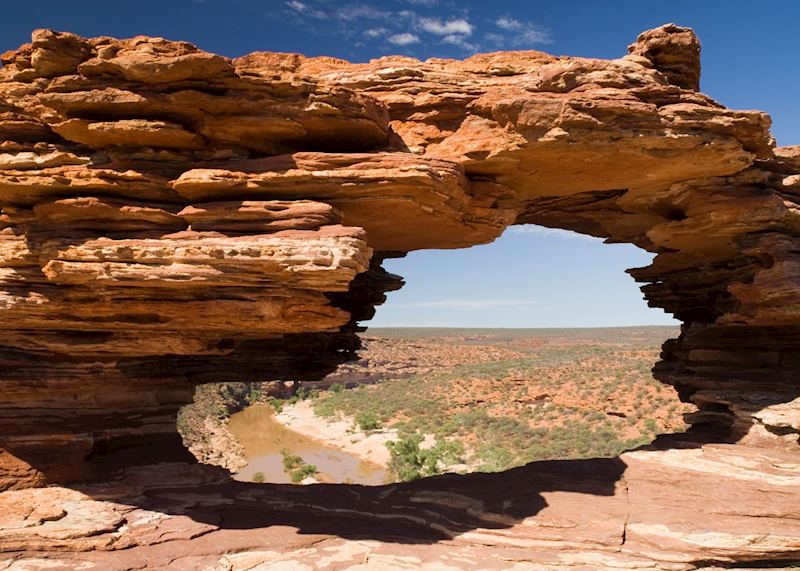
Under the sea
Although I have spent a lot of time on the Great Barrier Reef, and it has a special place in my heart, I was genuinely astonished at the amount of marine life that I saw during just one day’s snorkelling on the Ningaloo Reef.
The world’s closest fringing reef at 260 km (161 miles) long, the Ningaloo — unlike the Great Barrier — lies close to shore. You don’t need to venture out into the ocean to experience its treasures, nor do you need to be a diver. And — newsflash — it’s not all about whale sharks. Although these gentle creatures visit the reef from March to July, they’re not the only fish in the sea.
I took a group snorkelling trip out of Coral Bay. 'You’ll be swimming with turtles today,' announced our skipper. Ok, I thought, sceptically, let’s hope I see at least a couple. Wrong. Within minutes of entering the water, I was surrounded by them, their shells like a throng of rocks bobbing about on the surface.
Next, it was the turn of the manta rays, who soared beneath me like underwater kites. Then, we moored over what was — as our on-board marine biologist explained — a shark cleaning station. Sure enough, when I jumped back in and donned my mask, there they were. Grey reef sharks circled below, patiently having their pedicures (courtesy of thousands of small fish who nibble at the parasites on their skin). I also counted — among other species — flounders and a spindly, flute-like cornetfish.
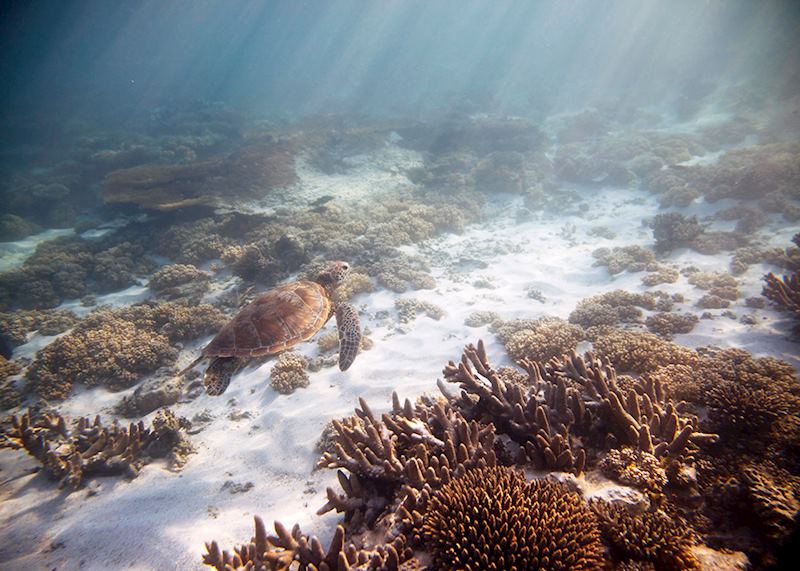
Further to the south, at Monkey Mia, you can also see something very rare: dugongs (a type of sea cow). Once endangered due to depleted seagrass meadows (their food source), the dugongs here are now happily breeding again. You can take a boat trip that has permission to enter a special dugong reserve. You will, with luck, see several of them mooching placidly around the boat.
Back on dry land, keep an eye out for thorny devil lizards (yes, that’s their real name). Encrusted in triceratops-like spines and hooks, they’re petite yet fearsome. The one I saw was most obliging and posed for an extended photoshoot.
Call of nature
Darren Capeswell — 'call me Capes' — is a Yamaji Man from Shark Bay and you can spend a day with him touring his back yard, Francois Peron National Park. He takes you around the park by 4x4 (the only way to access it), pulling over at whim to examine ocean viewpoints, take short walks and explore bush medicine and bushcraft.
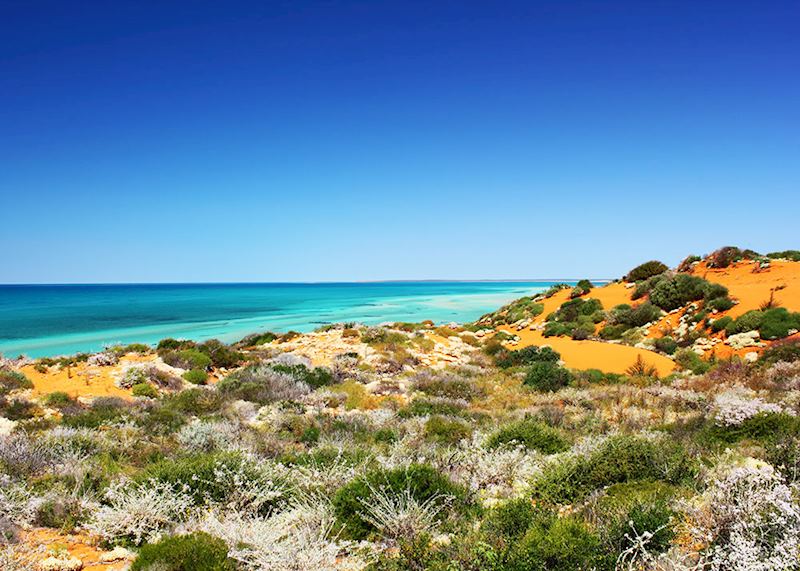
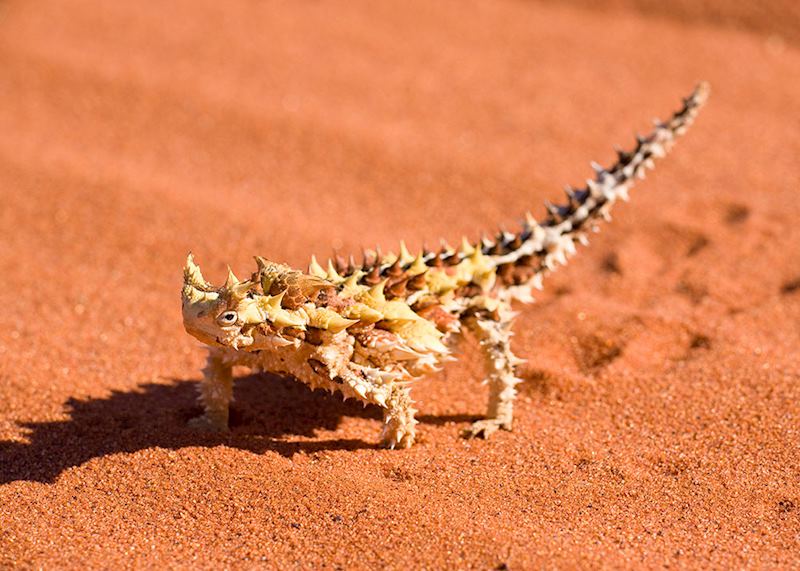
'Do you happen to have a small blemish on your body?' he asked at one point. Sheepishly, I showed him one of my hands. 'Stick this in,' he said, handing me some thorns, 'and in a couple of days it’ll be gone.' He wasn’t lying, I discovered.
Capes is filled with positivity about the future of Aboriginal-owned businesses in the fishing and touring industries. Expect to be called 'Sista' or 'Brotha', and to glean a lot of information about native flora and fauna. 'When nature talks, we listen; when nature’s healthy, we’re healthy,' he told me when discussing the region’s ecology.
The evening is spent at the Francois Peron Homestead, a heritage property with a hot-spring-fed hot tub in its grounds. You can soak in it, wine in hand, and stargaze while Capes barbecues fresh barramundi.
At one point I saw him gazing at the moon. 'It’s going to rain tomorrow,' he mused. Friends, he wasn’t lying about that either.
Start planning your trip to Western Australia
Start thinking about your experience. These itineraries are simply suggestions for how you could enjoy some of the same experiences as our specialists. They’re just for inspiration, because your trip will be created around your particular tastes.
View All Tours in AustraliaWas this useful?


